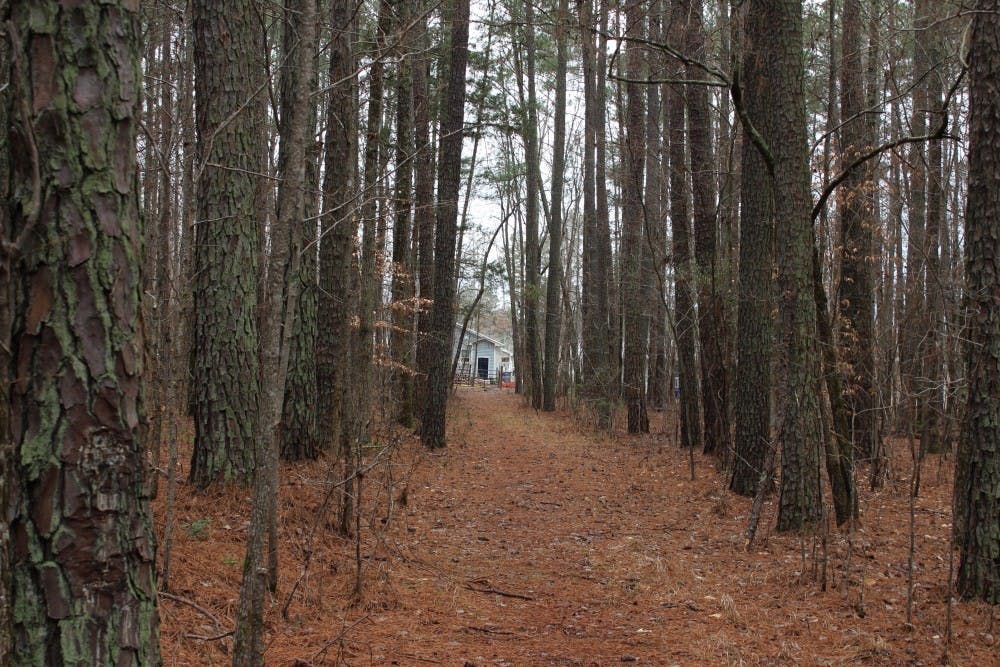A 'long history of discrimination'
Chapel Hill Town Council member Karen Stegman said she was in favor of the original resolution because it was driven by the vision of residents in the Rogers Road neighborhood, a historically African American neighborhood on the Greene Tract land that has historically been underserved by local municipalities.
In 2016, after months of hearing from community residents, the Rogers-Eubanks Neighborhood Association and Jackson Center completed a report called “Mapping Our Community's Future.” The report laid out what type of development they believed would benefit their community the most, including mixed-income affordable housing units, small-scale commercial development and a new school for the neighborhood.
Stegman said the disagreement among the council that prevented them from moving forward with the original resolution was due to a strong push late in the discussion to preserve the entire tract.
“There were a lot of people who came into this new, and didn’t understand the years and years of intensive work that had gone on to get to the point where we were last summer, and that that work was based on, and very much respecting, the work of the RENA community and others," Stegman said.
Penny Rich, chairperson of the Orange County Board of Commissioners, said some Chapel Hill residents advocated to preserve the Greene Tract out of a concern that building affordable housing there could bring down the value of their homes.
“This is a horrible example of structural racism and white people manipulating Black people,” Rich said. “It is typical Chapel Hill, happy-clappy limousine liberals that don’t want to build affordable housing, because they don’t want it in their backyard, and that’s all it is, it is pure racism.”
For decades, residents of the Rogers Road neighborhood have been victims of structural and environmental racism in local development planning. The county built its first landfill on the north side of Eubanks Road in 1972 and a second in 1995 on the south side.
As a result of their proximity to the landfill, Rogers Road residents have endured several decades of negative impacts, such as "truck traffic, illegal dumping, a putrid stench, contaminated wells, rats and vultures," according to a community report.
“It is really important to understand the long history of discrimination and environmental racism that the RENA neighborhood has experienced,” Stegman said.
Looking towards the future
Moving forward on the Greene Tract discussions, Stegman said it is a top priority for her to apply a racial equity lens and ensure the voices of this long-marginalized community are not drowned out by competing agendas.
To get the day's news and headlines in your inbox each morning, sign up for our email newsletters.
The president of RENA, Robert Campbell, said the community report gave the Town the chance to hear the voices of the people and to frame development around their vision. Campbell said his goal is to not only shape development in a way that benefits the community, but to empower the community’s voice by encouraging residents to engage in the process.
Specifically, Campbell said one overarching concept of the vision is the creation of new housing units that expand upon the character of the current community.
“To create another adjacent community without including affordability and economic opportunity would be creating another barrier and add to being underserved,” he said.
Campbell, who spoke at the July 15 meeting in favor of the original resolution, said he remains hopeful about the future of the Greene Tract. He said he believes the community’s voice has become stronger and more cohesive after years spent working together on the report.
When the county and towns meet in December to discuss the findings of the environmental study, Hemminger said they will also plan how to share the results with the public. She said they are hoping to find a way to do this in person rather than virtually, so no community members are disadvantaged if they do not have access to virtual resources.
Campbell said he is waiting to see the findings.
“They are hearing the voices of the people, and they got the report from the people, and so I believe the voices of the people have more power in the shaping and the framing of what can be done on the Greene Tract,” he said.
@DTHCityState | city@dailytarheel.com




